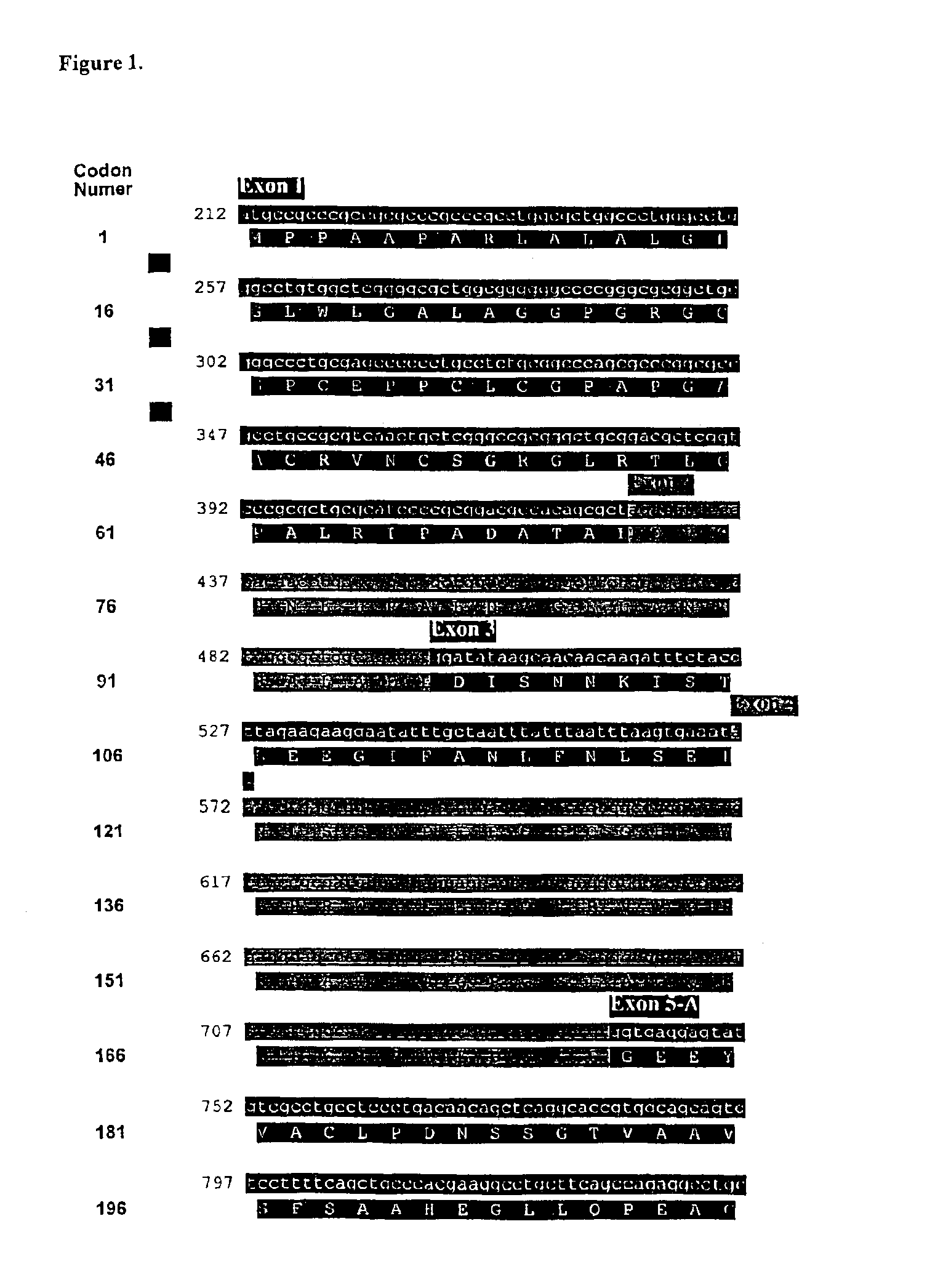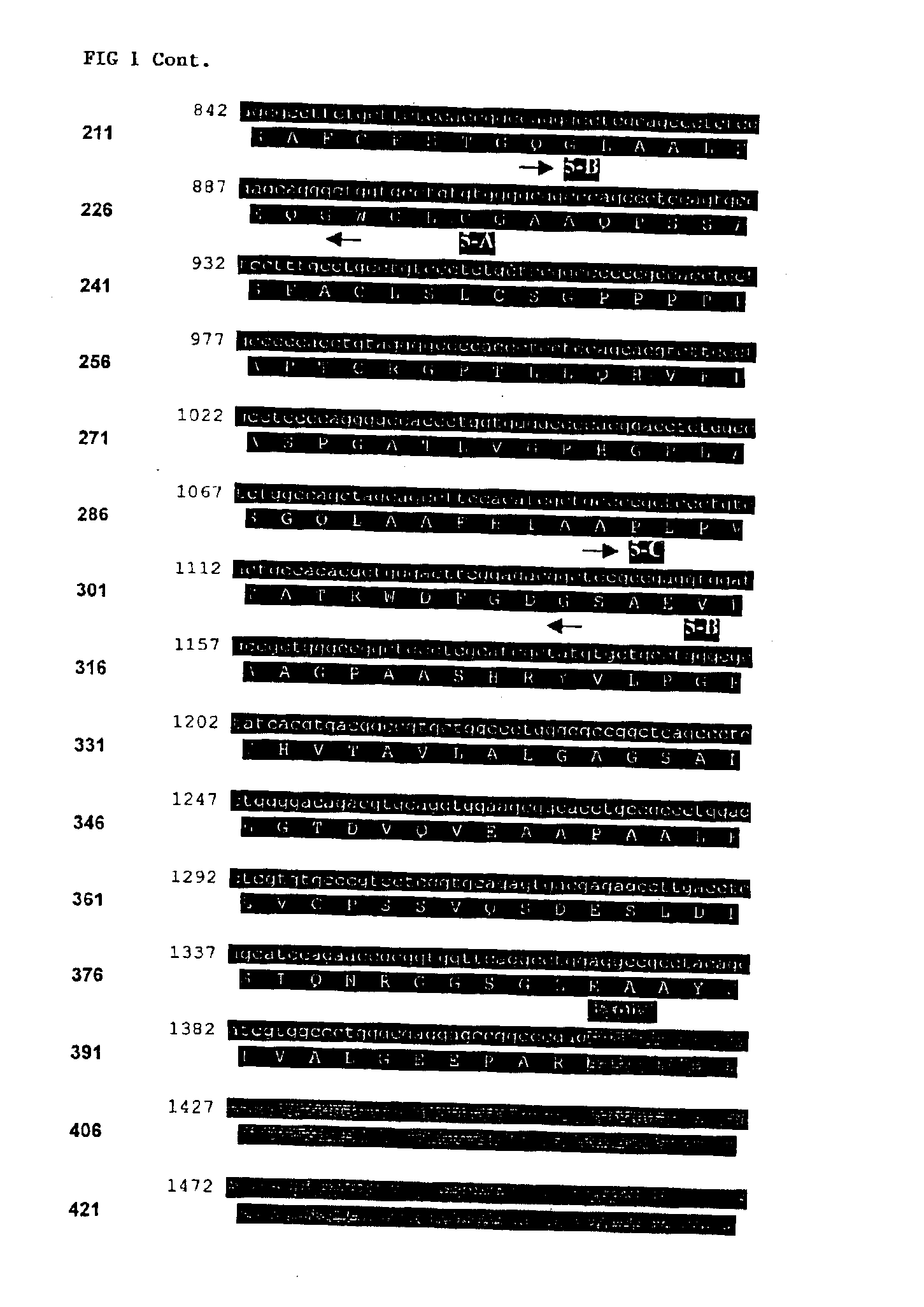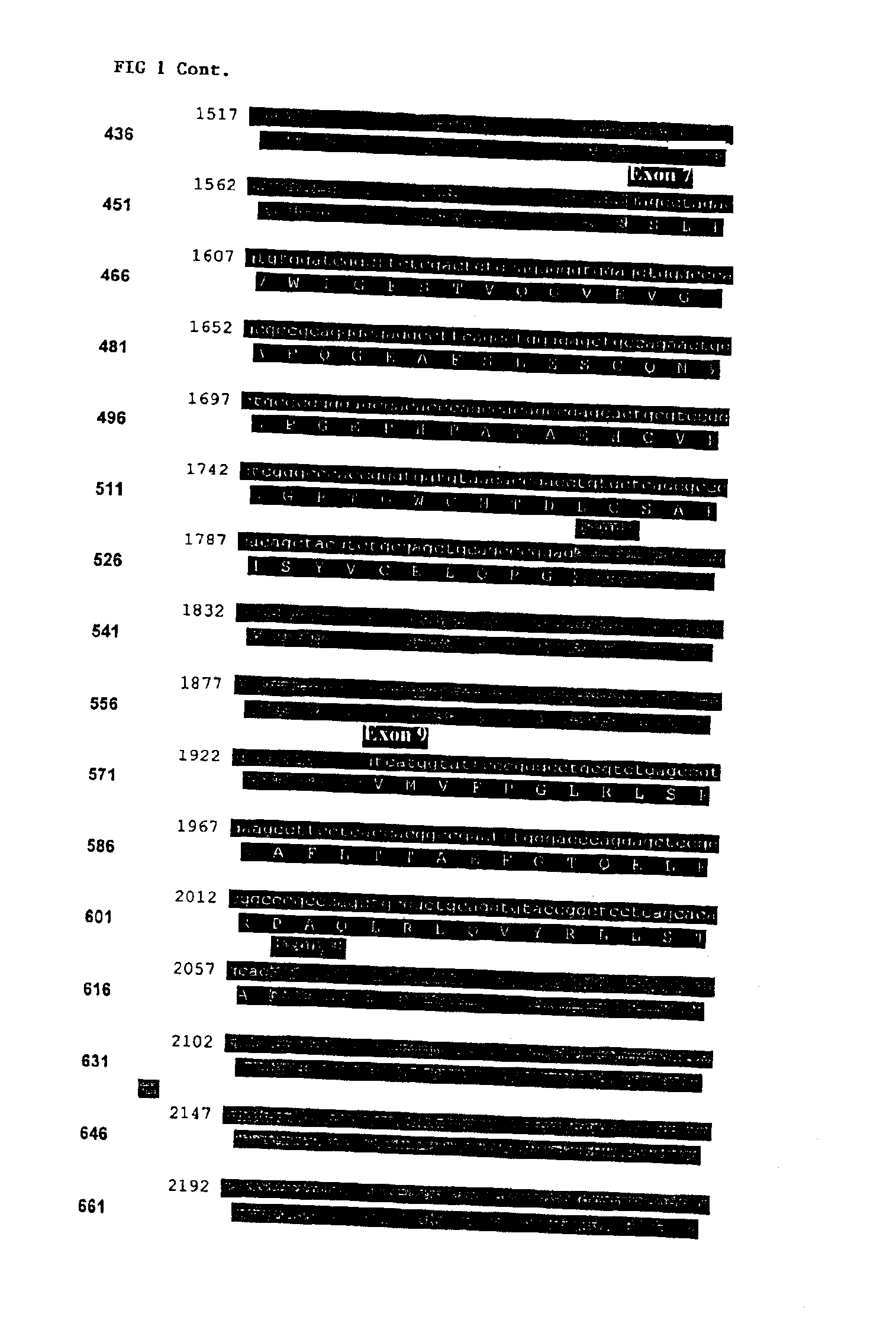Compositions and methods for genetic analysis of polycystic kidney disease
- Summary
- Abstract
- Description
- Claims
- Application Information
AI Technical Summary
Benefits of technology
Problems solved by technology
Method used
Image
Examples
example 1
Reagents, Special Supplies and Equipment
[0241]A. Chemicals
[0242]The following is a listed of chemicals used for PKD-1 amplification and DHPLC (WAVE) analysis.
[0243]1% Agarose, 1×TBE, 54 Well Gel with Ethidium Bromide (Embitec, Catalog Number GE 4580)
[0244]2% Agarose, 1×TBE, 54 Well Gel with Ethidium Bromide (Embitec, Catalog Number GE 4582)
[0245]96 Well Gel Filtration Block (Edge Biosystems, Catalog Number 91751)
[0246]Quickstep™ 96 Well PCR Purification Kit (Edge Biosystems, Catalog Number 99605)
[0247]AmpliTaq Gold with GeneAmp PCR Buffer II & MgCl2 Solution (Perkin Elmer, Catalog Number N808-0241)
[0248]rTth DNA Polymerase, XL & XL Buffer II Pack (Perkin Elmer, Catalog Number N808-00193)
[0249]TapPlus Precision PCR System (Stratagene, Catalog Number 600211)
[0250]Dimethyl Sulphoxide (DMSO) (Sigma, Catalog Number D-2650)
[0251]Ready-Load 100 bp DNA Ladder or Equivalent (Gibco BRL, Catlaog Number 10380-012)
[0252]Ready-Load 1 kb DNA Ladder or Equivalent (Gibco BRL, 1800-828-6686, Catlaog ...
example 2
Procedure
[0276]Stage I: Preparation of DNA and / or RNA from Patient Specimens
[0277]DNA is extracted from whole blood or lymphocytes using the Puregene® DNA extraction kit. DNA extracted using these reagents should be successfully PCR amplified under the conditions specific to the assay. This is tested by performing the assay as specified in the protocol and comparing the results obtained with the positive DNA control that has been previously validated.
[0278]Extracted DNA is quantitated and the 260 / 280 ratio is 1.4 or greater. Samples with lower ratios indicate that the quality of DNA is poor and may not meet PCR standards. If end results of the assay are not interpretable the sample should be re-extracted.
[0279]Stage II: Amplification of DNA by PCR
[0280]PCR reaction mixtures and cycling parameters (e.g., for exon 1 of PKD-1 gene) were set up as illustrated in Table 5. PCR conditions were set up similarly, but optimized for specific and efficient amplification of other exons.
[0281]
TAB...
example 3
Summary of Results
[0294]In one experiment, detection of mutations in exons 1-34 of the PKD-1 gene was achieved by using eight sets of oligonucleotide primers in eight separate first round PCR reaction to amplify DNA fragments of the following sizes: a) LR1 was 2.2 kb and contains exon 1. b) LR2 was 4.6 kb and contains exons 2-7. c) LR3 was 4.2 kb and contains exons 8-12. d) LR4 was 4.4 kb and contains exons 13-15. e) LR5 was 3.4 kb and contains exons 15 (3′-end) through 21. f) LR6 was 0.3 kb and consists of exon 22. g) LR7 was 4.2 kb and contains exons 23-28. h) LR8 was 5.8 kb and contained exons 29-34 of the duplicated region of the gene. The amplified product from the first round of amplification were then serially diluted to 1:104 or 1:105 to remove genomic contamination and subsequently used as template in a second round of nested PCR. The nested PCR products were heteroduplexed and screened for sequence alterations by DHPLC. Each fragment was analyzed against a normal and posit...
PUM
| Property | Measurement | Unit |
|---|---|---|
| Time | aaaaa | aaaaa |
| Temperature | aaaaa | aaaaa |
| Temperature | aaaaa | aaaaa |
Abstract
Description
Claims
Application Information
 Login to View More
Login to View More - R&D
- Intellectual Property
- Life Sciences
- Materials
- Tech Scout
- Unparalleled Data Quality
- Higher Quality Content
- 60% Fewer Hallucinations
Browse by: Latest US Patents, China's latest patents, Technical Efficacy Thesaurus, Application Domain, Technology Topic, Popular Technical Reports.
© 2025 PatSnap. All rights reserved.Legal|Privacy policy|Modern Slavery Act Transparency Statement|Sitemap|About US| Contact US: help@patsnap.com



